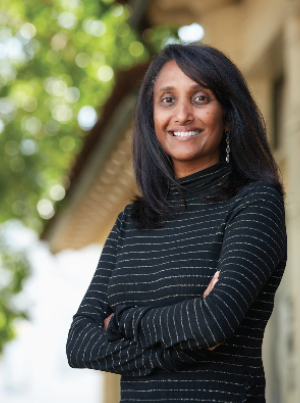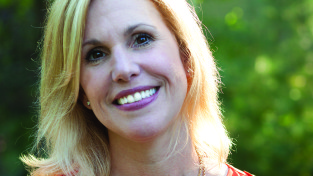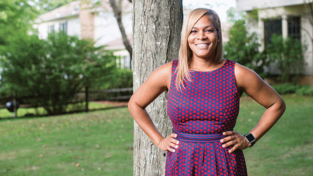Ten Minutes With: Sowmya Subramanian ’96
Sowmya Subramanian ’96 is senior director of engineering at Google, where she is currently leading engineering in Google Search to help grow the open web ecosystem to continue to meet the information needs of users. She was instrumental in the development of several YouTube products, including YouTube Live, YouTube Kids and YouTube Music, as well as in the transformation of YouTube from an exclusively ad-based site to the addition of YouTube Premiere. Subramanian is committed to empowering women and girls in technology. She co-leads the Google North America group Women@; serves on the advisory boards of PBS Kids and iTVS Women & Girls Lead Global; and has given several talks about empowering women through technology, including at Mount Holyoke in March 2019
On mentoring:
I see women in technology wondering why they’re asking questions no one else in the room is asking, and they start telling themselves a story that this is not the right way to think or not the norm of how to behave, or that they are not technical enough. That’s just not OK. If you have potential and talent, no matter who you are, you should be able to use it and do good things. You should be able to own it.
My priority with women in technology is about influencing products and making technology more accessible to everyone.
On modeling “owning it”:
After graduate school at the University of Wisconsin, Madison, I became an engineer at Oracle in the core database team — one of the top database companies at that time. Within my first year I realized that a lot of my ideas would take too long to be seen by the end user, and my motivation for being in technology was to solve user problems. So I moved from database development to a small team responsible for building apps and web experiences, which grew to become the platform for all Oracle customer relationship management. My technical background combined with my ability to see the bigger picture and how to apply it to meet user needs allowed me to build products that resonated with people and inspired others to work on them. Soon enough I was working in management positions.
Similarly, at Google, I kickstarted an initiative, “Bridging the Gender Gap,” to help us look critically at our products, algorithms, designs and marketing to identify any gaps and figure out how to bridge them. This forced us to look at the same problems and products we’d been looking at before, but from a different angle, which helped us with innovation. Very quickly we realized this is not about gender, and pivoted to “Inclusive Design.” It was eye-opening for me to see that a lot of our products have more opportunity to be designed to be inclusive. I could map why something would matter for the user, or how to alter it to solve the user’s problems. I understood where the actual gaps and needs were and how technology could innovate to help fill those gaps.
On innovative thinking:
When I joined Google, I went to some marketing studies to understand user needs, which surprised the marketing team because they’d never had an engineer be so collaborative with them.
I started seeing that people love the videos on the YouTube Kids platform, but in speaking to some families, we saw an opportunity to build out more specialized experiences that are more accessible to everyone. I looked at it from the consumer point of view — if I’m a kid, how do I engage with YouTube? When content creators see that users are engaging more deeply, they are going to be able to innovate in a different way, too. It allows for the building of an ecosystem that benefits the creators and the consumers.
—Interview by Julia Munemo
This article appeared as “Seeing the Bigger Picture” in the fall 2019 issue of the Alumnae Quarterly.
November 4, 2019











Leave a Reply